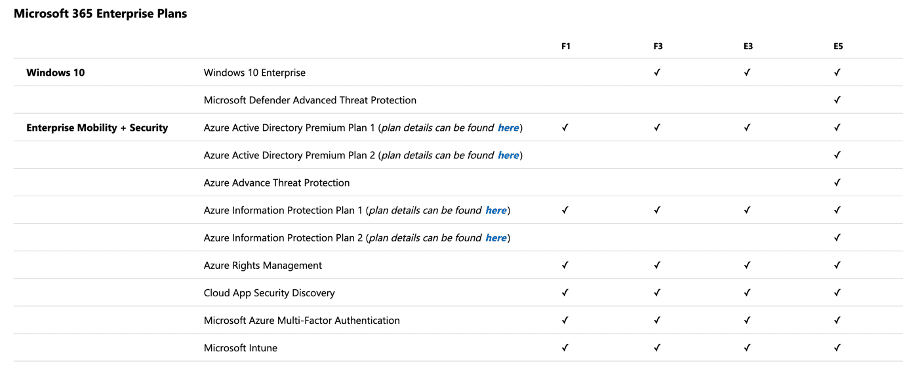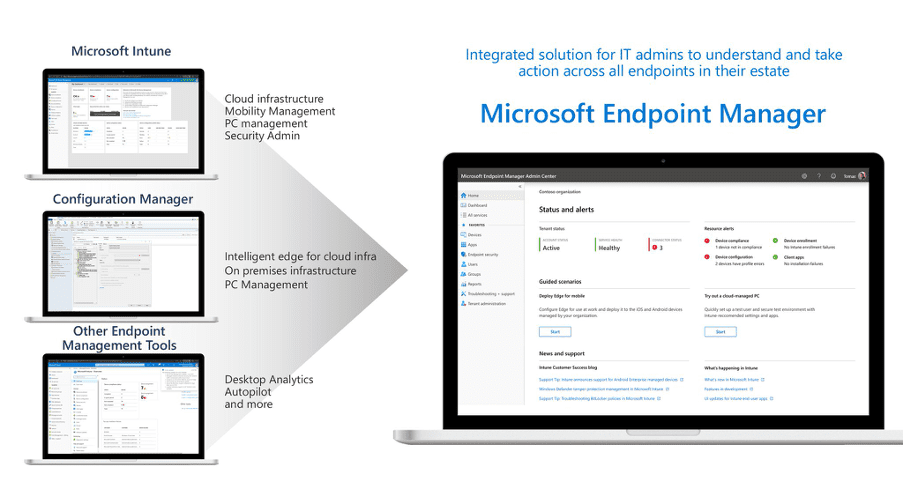Just marketing?
When I re-joined the industry about six months ago, I heard a heap of new phrases that had sprung up over the last couple of years during my absence. Microsoft Modern Management was one of them. I was rapidly able to deduce that this wasn’t referring to Satya Nadella, of course. But explanations of what it really is ranged quite considerably. Some said “it’s the replacement for System Center in the cloud” while others said “It’s just a marketing”. Given the persistence of the phrase, I persevered. What I found was that the above was both true and completely untrue also.
The old System Center manoeuvre (aka a somewhat nerdy history lesson)
If you’ve been around a while, you’ll remember the genesis of Microsoft System Center. It was a truly genius move by Microsoft to ensure adoption of a number of their products which up until that point had not been considered mainstream.
Systems Management Server 2003 (being the third iteration) was the version of SMS that really worked. Organizations put it on their roadmaps to replace legacy tools like Altiris and Tivoli and it really took off in a big way. At roughly the same time, Microsoft acquired a relatively minor player in the server monitoring space with a product called One Point. They rebadged it as Microsoft Operations Manager, reskinned it and gave it a solid roadmap of management packs that would, by design, know how to keep an eye on everything Microsoft. I think it’s safe to say that it was treated sceptically at first by many. Because it was an acquired product, it wasn’t fully integrated and there was a feeling that it was a statement of intent rather than something that was quite ready to go.
Then, in 2007, Microsoft released the ‘System Center’ family of products. As I said above, I believe this was a truly genius move. It effectively made Microsoft operations tools into Pokemon for IT Management. You “gotta catch em all”. Whereas before, there was a question of whether Operations Manager was a viable replacement for whatever monitoring tool you were using, now it had become the expectation. Why did you have ConfigMgr in your collection but not OpsMgr. I jest, but you get the point. If you had SMS2003, obviously you would upgrade to System Center Configuration Manager 2007 and therefore obviously your IT department would be moving to adopt the rest of the System Center family. Conversations about “whether Operations Manager was a good fit” slowly drifted toward “where to use it” or “how to plug the gaps”. It had become a fait accompli.
What is Microsoft Modern Management?
Put simply, it’s managing users and devices via the cloud via Microsoft. It rebadges Microsoft Intune to Microsoft Endpoint Manager (in much the same way that Systems Management Server became ConfigMgr all those years ago) and incorporates a bunch of other cloud-based technologies from across the portfolio.
So is Microsoft Modern Management, just as they say, a marketing name for a suite of somewhat related technologies?
Short answer: Yes
Longer answer: It goes a little deeper than that, because there must be more to it than a name, right?
So, the emperor’s not wearing any clothes…right?
Yes. Well, no. Well it’s complicated. Again, looking back to what happened with System Center. On the one hand, it was just a rebadging of stuff. It’s what technologists call “just marketing” in a pejorative sense. But on the other hand, that “just marketing” could also be retold as a rallying cry to unify technologies and articulate a strategic direction. Arguably, Modern Management is “just marketing” slapping new labels on existing product. But it could also be leadership putting a stake in the ground and spelling out their roadmap for the next few years. And if ‘the System Center manoeuvre’ is anything to go by, it will work.
More than just storytelling—you’d be wasting money not to
If you were to poll the general public about companies that are great at marketing, Apple would likely come out on top. Microsoft’s strength in this department was never about marketing to the public though, it was about marketing to business. And that has consistently been a strength, but pales in comparison to the way that they have leveraged licensing to steadily march on and on to grow share of wallet. Microsoft have successfully leveraged licensing bundles to augment the Pokémon effect, so once you have a little investment in Microsoft, then more technology is either bundled in or it’s a “would you like fries with that” no-brainer addition. The most common Microsoft enterprise licensing bundles (E3 & E5) include the Modern Management tools natively.

The net effect is that IT leaders feel two things:
- A sense of incompleteness from deploying part of the suite.
- The feeling that they’re wasting money when they don’t. It’s a perfect adoption strategy.
But there’s always a “but…”.
So, while Modern Management is an exciting rallying cry from Microsoft to drag IT Operations off premise and to embrace all the benefits of cloud, there is a medium ‘but’. The major hole in this plan is that there is a huge community of Microsoft System Center Configuration Manager admins and engineers who, for the most part, like the product they are using. Microsoft Endpoint Manager (previously Intune) simply doesn’t do enough stuff to really make a whole replacement scenario viable.
It was cloud… suddenly it kinda wasn’t
The solution to this was to compromise. Microsoft wants adoption of the program as much as the individual products. So, the solution was just to take Configuration Manager and put it into the Modern Management bag.

System Center ConfigMgr becomes Microsoft Endpoint Manager Configuration Manager (or MEMCM to its friends). This essentially allows for an adoption-by-default play. Now, everyone’s moving to Modern Management. The only question is, do you go pure cloud (Intune/Endpoint Manager) or hybrid (ConfigMgr/EMCM plus some Endpoint Manager for some scenarios)?
Having spoken to dozens of large enterprises and after a small twitter poll that I ran recently, it seems like many are either hanging back for a year or planning on the hybrid scenario.
Where does 1E fit into all this?
1E tools have been augmenting Microsoft SMS, then System Center, now Modern Management for large enterprises for twenty plus years ConfigMgr. Our solutions have focused on ensuring success, especially in the more complex scenarios that many large enterprises have but are rarely considered out the box. 1E Nomad, our ConfigMgr integrated content distribution solution, obviates the need for extensive distribution server infrastructure and ensures that IT Operations’ file transfers never disrupt the end user. This is more vital than ever in this remote-first world.
Nomad also features a pile of additional safeguards for managing endpoints to ensure that the ConfigMgr client and the Windows technologies that it depends upon are healthy. Getting the right content to laptops without disturbing the end user and knowing that you can install it is more vital than ever because of the recent surge in remote working and security threats.
We have an exciting roadmap for 1E Nomad which continues to augment Modern Management for enterprise IT, just as we have done for System Center. If you’d like to learn more about Nomad, we’re hosting a webinar, 5 reasons to upgrade Nomad on the 1E Platform, this Thursday, October 8th at 1.00pm EDT | 6.00pm BST. I do hope you’ll join us.









